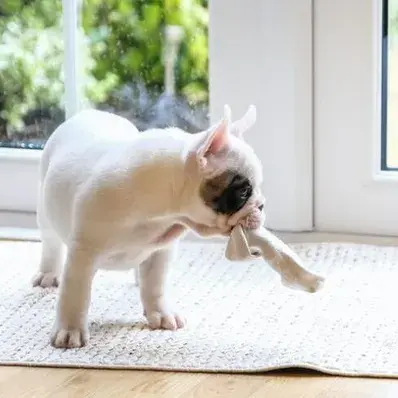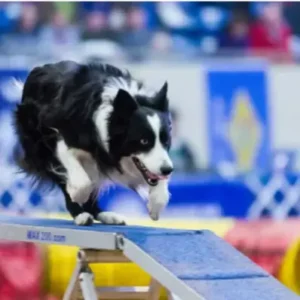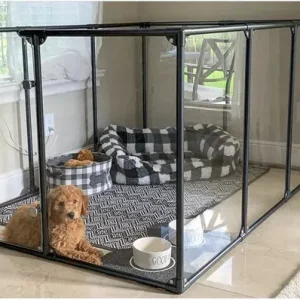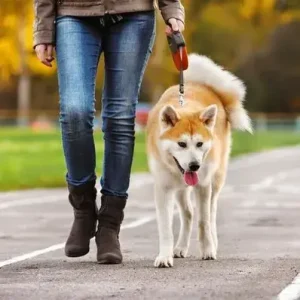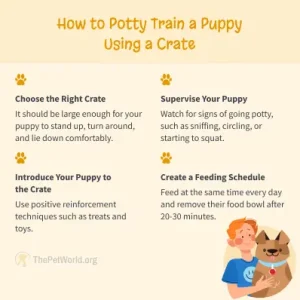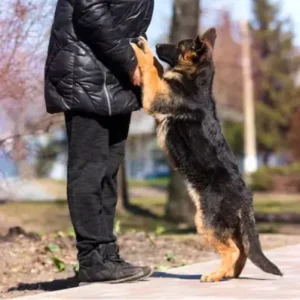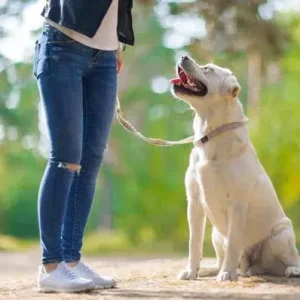House Training vs. Potty Training: What's the Difference?
While house training and potty training are often used interchangeably, they refer to slightly different concepts in the dog training process. House training is a broad term that teaches a dog to behave appropriately in the home. It includes potty training but also covers other behaviors like chewing, crate training, and following house rules.
On the other hand, potty training a dog specifically refers to teaching a dog where and when it’s appropriate for it to relieve itself, typically outdoors or in a designated spot.
There is a subtle difference between the two terms. However, both are commonly used to describe the process of teaching a dog bathroom habits. In everyday conversation, they are often used interchangeably.
Preparing for House Training
To start house training, gather a few supplies:
- Puppy pads: Perfect for training in a designated indoor spot.
- Crate Training: Creates a safe and comforting space for your dog and encourages bladder control.
- Leash: Helps guide your dog and establish boundaries for where it should go.
- Treats: Essential for rewarding good behavior and reinforcing training during the process.
Steps for House Training a Dog
House training your dog breed involves teaching them to follow house rules. This includes potty training, preventing chewing, and encouraging good behavior indoors.
Here are the key steps to get started.
Step 1: Establish a Routine
- Set fixed times for meals, potty breaks, and bedtime to create predictability for your dog.
- Take your dog outside every 2-3 hours, as well as immediately after eating, drinking, or waking up.
- Keep the schedule consistent every day to help your dog understand when and where they need to go.
Step 2: Designate a Potty Area
- Choose a specific spot outdoors where you want your dog to go potty and take them there each time.
- To house train a dog fast, establish a consistent potty schedule and reward your dog immediately after they go potty outside.
- Avoid distractions in the potty area to help your dog focus on the task at hand.
Step 3: Supervise Indoors
- Watch your dog closely indoors, especially during the early stages of training to prevent accidents.
- Use baby gates or playpens to limit your dog’s access to areas where accidents are more likely.
- Be proactive and take your dog outside at regular intervals to avoid accidents inside.
Step 4: Crate Training
- Use a crate that is appropriately sized—large enough for your dog to stand, turn around, and lie down comfortably, but not too large.
- Make the crate a positive space by using treats, toys, and comfort items to encourage your dog to enjoy it.
- Only leave your dog in the crate for short periods, gradually increasing the duration as they become accustomed to it.
Step 5: Redirect Chewing Behavior
- Provide a variety of chew toys to redirect your dog’s attention from furniture or shoes.
- If your dog starts chewing on inappropriate items, calmly remove them and replace them with a toy.
- Praise your dog when they chew their toys, reinforcing the desired behavior.
Step 6: Enforce House Rules
- Establish clear boundaries, such as which rooms your dog is allowed in or which furniture is off-limits.
- Consistently reinforce these rules, using verbal cues or gentle redirects when your dog crosses boundaries.
- Ensure everyone in the household is consistent with these rules to prevent confusion for your dog.
Step 7: Use Positive Reinforcement
- Reward your dog with treats, praise, or affection whenever they exhibit good behavior (e.g., going potty outside or following house rules).
- Provide rewards immediately after the behavior to help your dog make the connection between the action and the reward.
- Avoid punishment for undesirable behavior; focus on reinforcing positive actions instead.
Step 8: Training Basic Commands
- Start with simple commands like “sit,” “stay,” and “come” to teach your dog good manners in the house.
- Use positive reinforcement (treats, praise) to reward your dog when they perform a command correctly.
- Keep training sessions short and engaging to avoid overwhelming your dog and to maintain their interest.
House Training a Dog According to Age
House training a dog varies depending on age, as puppies, adult dogs, and even seniors face different challenges when learning proper bathroom habits.
| Age Group | Challenges | Tips |
| Puppies | Limited bladder control, high energy, and curiosity. | Frequent potty breaks, crate training, and positive reinforcement.
House training a 1-year-old dog is often easier as they have better control and can focus more on learning. |
| Adult Dogs | May have established bad habits or be stubborn. | Reinforce desired behaviors, maintain a consistent routine, and address problem behaviors like jumping or chewing. |

